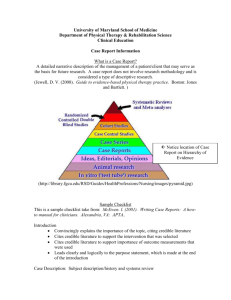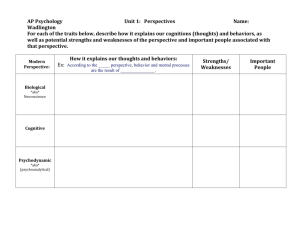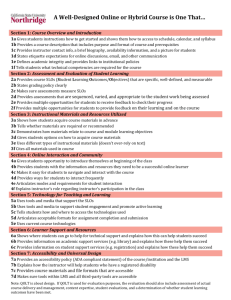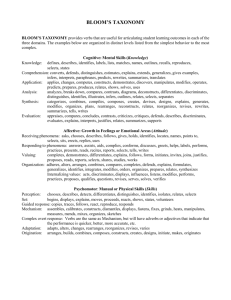Animal Science Distinguishes between basic and applied science
advertisement
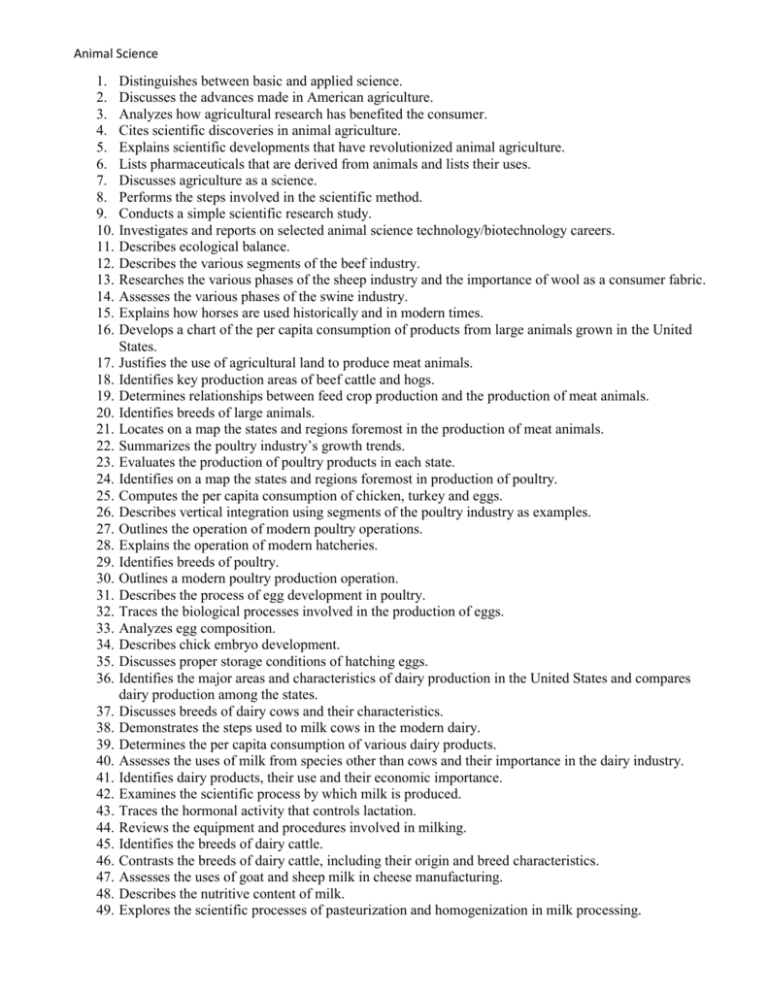
Animal Science 1. 2. 3. 4. 5. 6. 7. 8. 9. 10. 11. 12. 13. 14. 15. 16. 17. 18. 19. 20. 21. 22. 23. 24. 25. 26. 27. 28. 29. 30. 31. 32. 33. 34. 35. 36. 37. 38. 39. 40. 41. 42. 43. 44. 45. 46. 47. 48. 49. Distinguishes between basic and applied science. Discusses the advances made in American agriculture. Analyzes how agricultural research has benefited the consumer. Cites scientific discoveries in animal agriculture. Explains scientific developments that have revolutionized animal agriculture. Lists pharmaceuticals that are derived from animals and lists their uses. Discusses agriculture as a science. Performs the steps involved in the scientific method. Conducts a simple scientific research study. Investigates and reports on selected animal science technology/biotechnology careers. Describes ecological balance. Describes the various segments of the beef industry. Researches the various phases of the sheep industry and the importance of wool as a consumer fabric. Assesses the various phases of the swine industry. Explains how horses are used historically and in modern times. Develops a chart of the per capita consumption of products from large animals grown in the United States. Justifies the use of agricultural land to produce meat animals. Identifies key production areas of beef cattle and hogs. Determines relationships between feed crop production and the production of meat animals. Identifies breeds of large animals. Locates on a map the states and regions foremost in the production of meat animals. Summarizes the poultry industry’s growth trends. Evaluates the production of poultry products in each state. Identifies on a map the states and regions foremost in production of poultry. Computes the per capita consumption of chicken, turkey and eggs. Describes vertical integration using segments of the poultry industry as examples. Outlines the operation of modern poultry operations. Explains the operation of modern hatcheries. Identifies breeds of poultry. Outlines a modern poultry production operation. Describes the process of egg development in poultry. Traces the biological processes involved in the production of eggs. Analyzes egg composition. Describes chick embryo development. Discusses proper storage conditions of hatching eggs. Identifies the major areas and characteristics of dairy production in the United States and compares dairy production among the states. Discusses breeds of dairy cows and their characteristics. Demonstrates the steps used to milk cows in the modern dairy. Determines the per capita consumption of various dairy products. Assesses the uses of milk from species other than cows and their importance in the dairy industry. Identifies dairy products, their use and their economic importance. Examines the scientific process by which milk is produced. Traces the hormonal activity that controls lactation. Reviews the equipment and procedures involved in milking. Identifies the breeds of dairy cattle. Contrasts the breeds of dairy cattle, including their origin and breed characteristics. Assesses the uses of goat and sheep milk in cheese manufacturing. Describes the nutritive content of milk. Explores the scientific processes of pasteurization and homogenization in milk processing. Animal Science 50. Recognizes and explains the differences in milk classifying and grading. 51. Demonstrates the conversion of milk to butter, cheese and ice cream products. 52. 53. 54. 55. 56. 57. 58. 59. 60. 61. 62. 63. 64. 65. 66. 67. 68. 69. 70. 71. 72. 73. 74. 75. 76. 77. 78. 79. 80. 81. 82. 83. 84. 85. 86. 87. 88. 89. 90. 91. 92. 93. 94. 95. Explores the scope of the aquaculture industry. Classifies the characteristics of ectothermic animals. Evaluates the feed-conversion efficiency of fish. Researches types of aquatic animal production in the United States. Investigates the physical characteristics of water and its relationship to fish production. Estimates fish populations in production operations by scientific sampling. Measures and adjusts water pH as it relates to fish growth and development. Describes how fish attain oxygen. Explains how oxygen is dissolved into and depleted from water. Tests pond and river and other water for dissolved oxygen levels. Provides for the addition of oxygen to water by mechanical agitation. Describes the methods and facilities used in the production of various aquatic animals. Interprets the behavioral characteristics of bullfrogs and alligators that make them difficult to produce in confinement. Analyzes the advantages and disadvantages of raising alternative agricultural animals. Describes alternative animal agriculture industry. Explains the potential of ostriches, goats and other alternative animals as food animals. Describes the production of certified laboratory animal. Lists the animals most often used in scientific research and explains reasons for their selection and use. Lists the distinguishing characteristics of insects used in agricultural animal production. Explains the importance of the honeybee to agriculture and the society of the honeybee. Discusses the threat to American agriculture by the Africanized honeybee and explains the biological reasons for the problem. Outlines production practices to produce organic and natural animal products. Explains how agricultural animals are classified scientifically. Explains the use of the binomial system of classification. Utilizes kingdoms to classify all living organisms. Identifies characteristics of animals that place them in different classifications. Explains how breeds of livestock were developed. Explains the purpose of breed associations. Classifies agricultural animals. Identifies characteristics that can be used to group objects. Categorizes common and distinguishing characteristics of several agricultural animals. Rationalizes the consumers concerns for food safety. Explains the causes of problems with meat. Demonstrates knowledge of how safety problems can be solved. Differentiates between meat grading and meat inspection. Discusses examples of how genetic engineering has benefited the producer and consumer as well as the concerns over genetic engineering. Evaluates producers of agricultural animals as caretakers of the environment. Describes the concept of the greenhouse effect. Summarizes how the balance of oxygen and carbon dioxide is maintained in the atmosphere. Discusses how bacteria can be beneficial to the environment. Determines consumer concerns with various phases of the animal and meat industry. Explains the growth in organically produced animal products. Discerns the difference between animal welfare and animal rights. Researches potential problems brought about by animals being raised in confinement. Animal Science 96. Interprets the reasons given by some people for their objections to raising farm animals. 97. Debates the use of production practices such as confinement operations. 98. Debates management practices used in the production of agricultural animals. 99. Investigates the benefit to producers of content and healthy animals. 100. Explains potential problems of animal production such as the continuous use of antibiotics. 101. Cites examples of how the use of animals in research has benefited humans. 102. Investigates the laws that govern the use of laboratory animals for research. 103. Interprets the laws governing the use of agricultural animals. 104. Discusses the production and increasing popularity of natural and organically produced animal products. 105. Describes the importance of ethology in the production of agricultural animals. 106. Differentiates between instinctive and learned behaviors of animals. 107. Judges animal intelligence based on behavior. 108. Describes the conditioning response and its use in animal production. 109. Explains how animal behaviors are developed. 110. Infers how unusual stimuli and surroundings affect animals. 111. Examines how cattle view their surroundings and how that behavior is used to design cattle facilities. 112. Describes and identifies social, dominate, flight, and protective behaviors in animals. 113. Investigates the social behaviors of agricultural animals. 114. Identifies dominant animals in a group. 115. Discusses how dominant behavior contributes to natural selection. 116. Analyzes the types of sexual and reproductive behaviors in agricultural animals. 117. Observes animal behavior and successfully collects data for an ethogram. 118. Describes the methods used by agricultural animals to communicate. 119. Describes the types of ingestive behaviors in agricultural animals. 120. Explains how the natural behaviors of agricultural animals can be used to provide the animals with a safer, more comfortable environment. 121. Explains the basic function of deoxyribonucleic acid (DNA) and ribonucleic acid (RNA). 122. Explains how traits are passed from parent to offspring through genetic transfer. 123. Researches and explains the concept of dominant genes verses recessive genes. 124. Describes the concept of co-dominant genes. 125. Explains how producers use the genetic principles to produce desired types of animals. 126. Explains how the sex of an animal is determined. 127. Explains the difference between phenotypic and genotypic characteristics. 128. Computes mathematically the expected color of offspring. 129. Compares the expected coat color with results obtained through scientific observation. 130. Describes how the concept of heritability is used in the selection of livestock. 131. Predicts phenotypic and genotypic characteristics in animals. 132. Utilizes performance data in the selection of livestock. 133. Describes Expected Progeny Difference (EPD). 134. Explains the concept of natural selection. 135. Discusses how humans have influenced the development of animals. 136. Illustrates how scientific research has influenced the development of animals. 137. Cites examples of how problems have developed in animals because of the selection process controlled by humans. 138. Compares and contrasts the benefits of scientific animal selection and breeding by the producer with natural selection and random mating. 139. Traces the stages in the development of modern swine. 140. Discusses problems associated with overly muscled pigs. 141. Interprets the reasoning behind the selection of sex character in agricultural animals. Animal Science 142. Outlines selection criteria for specific agricultural animals and uses. 143. Outlines the physical characteristics associated with growth in animals. 144. Compares and contrasts the characteristics of modern beef, swine, and dairy animals with those of their ancestors. 145. Cites examples of heterosis in agricultural animal production. 146. Distinguishes between asexual and sexual reproduction. 147. Explains the process by which gametes are produced in both the male and female. 148. Diagrams and explains the steps involved in meiosis. 149. Describes the parts and functions of the male and female reproductive system. 150. Analyzes the functions of the hormones that control reproduction. 151. Describes the phases of the female reproductive cycle. 152. Explains the process by which fertilization takes place. 153. Compares the size and shape of sperm cells and egg cells. 154. Demonstrates the procedures used in artificial insemination. 155. Explains the use and procedures of embryo transfer and evaluates its economic importance. 156. Measures the growth process in an animal. 157. Analyzes the circumstances of growth that affect production enterprises. 158. Distinguishes between prenatal and postnatal growth and illustrates the phases of each. 159. Describes and explains the phases of mitosis. 160. Explains the layers of the blastula and the organs that are derived from each layer. 161. Describes the functions of the placenta. 162. Identifies characteristics of twenty-four, forty-eight, and seventy-two hour old chick embryos. 163. Differentiates between body cells and explains the functions of each type cell. 164. Sequences fat deposition in an animal’s body. 165. Investigates and explains why selection for muscling in animals is important. 166. Compares and contrasts the growth and reproductive phases in an animal’s life. 167. Describes the effects of hormones in the growth process. 168. Describes the effects castration has on the growth of an animal. 169. Explains the aging process in animals. 170. Distinguishes between chronological and physiological age. 171. Lists nutrients that are essential to the growth and development of animals. 172. Describes the role water plays in supporting animal growth and development. 173. Discusses the relationship between proteins and amino acids. 174. Identifies protein feed sources. 175. Distinguishes between carnivores, omnivores, and herbivores and gives examples. 176. Explains the role and importance of protein, carbohydrates, and fats in the diets of animals. 177. Identifies types of common sugars and their role in animal nutrition. 178. Identifies the common grains that are used as a source of carbohydrates. 179. Distinguishes between concentrates and roughages and gives examples of each. 180. Lists the sources of fats, minerals, vitamins, roughages, starches, sugars, proteins, etc., in animal rations. 181. Discusses the role that minerals play in animal growth and development. 182. Demonstrates the use of chemical tests to indicate the presence of nutrients. 183. Distinguishes between a monogastric and a ruminant digestive system. 184. Lists and defines the function of the organs of monogastric and ruminant digestive systems. 185. Explains the differences in feed used by monogastrics and feed used by ruminants. 186. Classifies agricultural animals as monogastrics or ruminants and predicts feed sources of each. 187. Describes the physiological processes that take place in the animal’s body at death. 188. Explains the steps in the slaughter of meat animals. Animal Science 189. Describes the biological process of ossification. 190. Estimates the marbling of beef. 191. Explains the value of high verses low yield grades. 192. Calculates the quality and yield grades for beef. 193. Identifies the wholesale and retail cuts of beef, pork, and lamb. 194. Explains the different types of tissues that compose muscles. 195. Describes the factors that affect the palatability of meats and the sensation of taste. 196. Describes the importance of meat to the human diet. 197. Evaluates the value of nutrients provided by meat. 198. Discusses the types of microbes that cause spoilage of meat products. 199. Lists the factors that favor the growth of microbes. 200. Researches the scientific principles involved in meat preservation. 201. Demonstrates the preservation of meat products using various curing methods. 202. Explains symbiotic relationships. 203. Distinguishes between mutualism, commensalism, and parasitism. 204. Discusses how parasitism causes harm to the host animal. 205. Identifies parasites of agricultural animals and matches the parasite to the host. 206. Estimates production losses due to parasites of agricultural animals. 207. Diagrams the phases of a parasite’s life cycle and identifies how knowledge of life cycle can be used to control the parasite. 208. Differentiates between internal and external parasites. 209. Explains how scientific research is used in the control and/or eradication of parasites. 210. Explains the conventional means of controlling parasites of agricultural animals. 211. Lists the types and characteristics of disease-causing organisms. 212. Describes three types and characteristics of bacteria. 213. Characterizes viruses and protozoa. 214. Identifies signs and symptoms that are used to recognize and quarantine sick animals. 215. Lists agricultural animal diseases caused by microorganisms. 216. Determines sources of disease-causing organisms in the environment. 217. Describes how an animal’s immune system works. 218. Explains the function of red and white blood cells. 219. Describes how disease vaccines are developed and the success of their uses. 220. Discusses how antigens enter the body and explains the body’s reactions. 221. Distinguishes between active and passive immunity. 222. Differentiates between naturally acquired immunity and artificially acquired immunity. 223. Differentiates between infectious and noninfectious diseases. 224. Describes how diseases are spread and prescribes methods to limit infection. 225. Lists examples of diseases caused by genetic disorders. 226. Cites examples of diseases caused by improper nutrition. 227. Researches plants that are poisonous to agricultural animals. 228. Provides examples of government disease-eradication programs. 229. Lists zoonotic diseases and concerns for human health. 230. Explains the role of the Agriculture Education program and the FFA in personal development. 231. Demonstrates knowledge learned through a Supervised Agricultural Experience Program (SAEP). 232. Develops leadership and personal development skills through participation in the FFA. 233. Explores career opportunities in animal science thought the FFA and Agriculture Education Program. 234. Explores the professional agricultural organizations associated with the course content.



